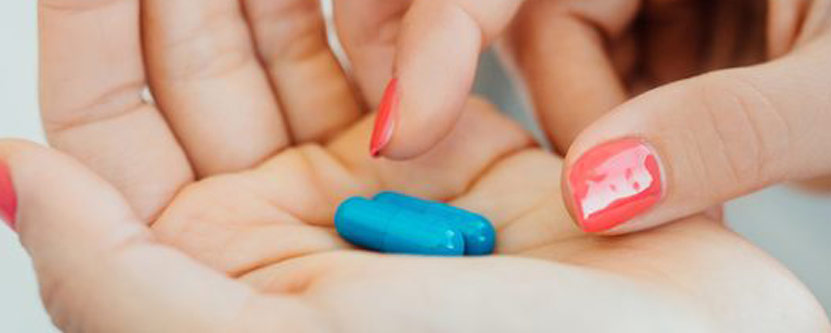Sleeping pills constitute substances that trigger or suppress certain brain activities which result in causing sleep.
[the_ad id=”6214″]
Sleeping pills are based on medical research on brain and sleep. Over a span of several decades sleeping pills with the differential mode of action as well as improved mode of action have been introduced.
The habit of buying sleeping pills over the counter and popping them without regard has been largely criticized by the medical fraternity as several times such practices lead to substance abuse, side effects and addiction.
Medical practitioners prescribe the suitable sleeping pill after thoroughly diagnosing the patient and the problem.
1. Sleep inducing mechanism
The following categories of sleep-inducing substances are based on differential mechanisms
- Barbiturates, Benzodiazepines, Non-benzodiazepines (‘Z-drugs’): Drug category includes phenobarbital, chlordiazepoxide, diazepam, temazepam, zolpidem, zopiclone, eszopiclone.
- Antihistamines: Examples include diphenhydramine and hydroxyzine.
- Antidepressants: Examples include trazodone and nefazodone.
- Adrenergic agonists: An example includes dexmedetomidine.
- Malatonin agonists: Examples include melatonin, ramelteon.
- Orexin receptor antagonists: Examples include Suvorexant, SB-649,868. (these drugs have not been approved yet).
2. Tranquilizers and Sleeping Pills
Tranquilizers are drugs that reduce anxiety. Anxiety can hamper the brains natural sleep mechanism.
Tranquilizers belong to two categories – minor tranquilizers and major tranquilizers. The former is usually referred to as antixiolytic whereas the latter is usually referred to as antipsychotic.
- Antixiolytic tranquilizers are prescribed by doctors in cases of anxiety, panic or anxiety with depression. These are essentially the beta blockers or the serotonine reuptake inhibitors and are generally prescribed as a ‘light therapy’.
- Antipsychotic tranquilizers are prescribed by doctors for conditions like schizophrenia, bipolar disorder, dementia, unipolar depression. These antipsychotic tranquilizer substances act by blocking dopamine D2 receptors, antagonizing 5-HT2A receptors and binding with the serotonin receptors-5HT2A and 5-HT2C.
3. Natural Sleep Inducers
Some substances which occur in nature have been known to have sleep-inducing properties. Though some of these are mild and safe like chamomile and lemon balm, the others need to be used only after appropriate medical advice. Included in the category of natural sleep indicers are substances like valerian, melatonin, chamomile, tryptophan and kava.
Several side effects of sleep inducers have been recorded and studied in medical history; the side effects can be minor, allergic or major.
- Minor side effects: include tingling or burning sensation in limbs, appetite changes, constipation, diarrhea, balancing difficulties, dizziness, drowsiness in the day time, dryness in mouth or throat, stomach ache, weakness, headache, gas, heartburn, mental tardiness, lack of attention, abnormal dreams, the shakiness of limbs.
- Allergic effects: include sight problems, blurriness in vision, chest pain, breathing and swallowing difficulties, choking sensation in the throat, itching, nausea, rash, swelling in eyes, lips, throat, face or tongue, breathlessness, hives, pounding heart beat and hoarseness.
- Major side effects: include parasomnia (sleepwalking) and anaphylaxis (acute allergic reaction)
4. Cognitive Behavior Therapy
Cognitive behavior therapy is a well planned behavioral therapy administered by psychotherapists. The therapists make controlled or no use of sleep inducers and rely mainly on behavioral therapy to reset normal sleep patterns in patients.
Cognitive behavior therapy can be an effective therapy for anger management, anxiety, panic, behavioral problems in children and adolescents, chronic pain and fatigue, depression, drug and alcohol addiction, eating disorders, mood disorders, obsessive-compulsive disorders, relationship problems, post-traumatic stress and phobia.
When is sleep medication not recommended?
- Sleep Apnea, patient suffers from shallow breathing or pauses in breathing. Sleep apnea can occur due to several reasons; the most common sighted reason is collapse or obstruction in the airway channel. Central sleep apnea a less commonly reported type of sleep apnea and occurs due to brain malfunction in controlling the breathing function of the body.
When should sleep inducers be taken?
- Just popping sleeping pills is a hazardous habit. Common sleep problems can be addressed by changing lifestyles, taking more exercise, cultivating a positive outlook, practicing meditation and spirituality. Only certain sleep-related disorders that are related to body or brain malfunction require medical attention, and it is advisable to seek medical assistance if one has been facing sleep problems despite trying out all normal recommended measures for over a month.
Chronic Sleeplessness
In patients with chronic, severe or non-rectifiable conditions, medical practitioners may prescribe a range of sleep medication with several alterations and as well as other medications and therapy. Doctors prescribe sleep medication when effects of insomnia outweigh the effects of medication.
Holistic Sleep Therapy
Medical practitioners prescribe appropriate sleep inducers upon diagnosing the patient in regular intervals over sufficient period of time during which medication can be changed and ultimately withdrawn when normal sleep patterns are re-established. Medical practitioners may combine medical therapies with behavioral therapies so as to maximize gains and minimize the side effects.
Source:

